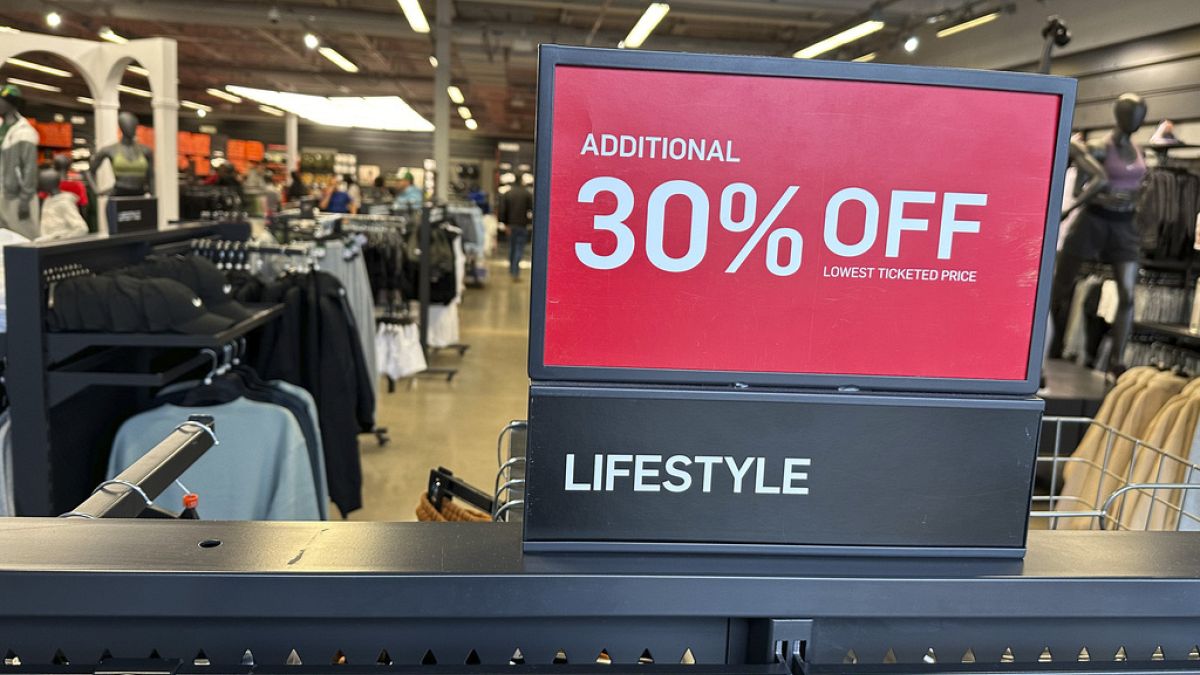Doom spending may be a coping mechanism to deal with anxieties about personal finances and the wider economic situation but it may be bad for your health.
Doom spending is spending excessive amounts of money on luxury things or experiences, such as travel, to deal with concerns about your own finances or the general economic situation. People may feel like there's no point in saving, since they feel they won't be able to achieve their financial goals, and may as well live in the moment.
Retail therapy and consumerism in general has long been used for its instant gratification, especially when people are feeling blue. However, doom spending can take it to a whole new level, with people often going into debt or failing to have a minimum level of savings or retirement funds.
Gen Z people and millennials are more likely to doom spend, with 43% of millennials and 35% of Gen Z people admitting to it, according to a survey by Credit Karma.
Iona Bain, founder of Young(ish) Money said, as reported by Vogue: "Shopping has always been an easy, low effort way to self-soothe, and our consumer economy has long been predicated on making us believe new purchases will lift our spirits and solve our problems."
Why are more people doom spending?
Most people doom spending nowadays usually do so to compensate for not being able to afford the traditional markers of adulthood, such as an apartment or a house, possibly because of the current economic and mortgage situation.
As TikTok user Maria Melchor (@firstgenliving), as reported by The Independent said in a video: "When older people ask me how young people are affording nice things that they wouldn't even buy for themselves, I tell them it's because we can't afford anything else.
"Homeownership or starting a family is so out of reach that we're using that down payment or kid money on whatever it is we can afford that'll bring us a semblance of the kind of adulthood we were promised.
"When houses are a million dollar (€0.9 million) plus and an older couple will likely outbid us anyway, we're gonna relinquish any lingering delusions about homeownership and instead use that money to give our dogs the most enriched puppyhood they can have."
With European Central Bank (ECB) interest rates at a record high of 4.5% and EU inflation still above market expectations, at 2.6% in February 2024, it is easy to understand where these worries are coming from.
In a way, doom spending can also feel like taking back a sense of control over your own life and finances, by allowing you to have at least some of the things you want.
According to Credit Karma, 16% of Gen Z respondents are also anxious about general job security, with 23% being concerned about not enough well-paying jobs. 21% were worried about falling wages. Overall, 71% of Gen Z people and millennials were anxious about their finances, which could also lead to more impulsive doom purchases.
The increasing popularity of buy now, pay later apps, as well as social media promoting several products and encouraging impulse buying, both for instant gratification and to keep up with a certain status, has also added to this phenomena.
What can you do to curb doom spending?
There are a number of ways to manage or cope with doom spending. Keeping a spending diary, for example, can be helpful, especially if you use it to examine what you bought, how it made you feel. You can also then keep a note of what you've learnt from the experience and any actions you'd like to take to prevent overspending in the future.
Setting some guidelines around your social media platforms and apps consumption can also help curb spending. These include temporarily deleting the social media or shopping apps that you feel cause you to overspend, or maybe restricting the amount of time you spend on them.
Furthermore, taking some time away from following influencers, especially those who seem to promote several items could also be beneficial.
Taking stock of activities other than shopping that you enjoy and find relaxing to deal with daily worries is another way, such as having a bubble bath, doing some yoga or going for a walk.
Another way which could be a long-term solution for doom spending, could be speaking to a financial adviser to work out a savings and investment plan to grow your wealth down the line. In this way, in time, you may still be able to achieve the goals that once seemed out of reach, such as buying a house. This could also help take back control of your finances and life in a healthier and more mindful way than doom spending.
Louise Hill, co-founder and CEO of financial learning website GoHenry said on the website: "All kids and teens need to understand how money and spending is linked to their self-esteem. You can't buy a lifestyle, and you won't feel better about the future by spending too much now.
"Instead, teach kids that a strong financial future is within their reach by helping them become financially literate. This way, they will have the confidence to save for a range of goals, say no to peer pressure and find better ways to cope when they feel down."
Is it all an online marketing gig?
Although the wider economic and financial reasons for doom spending are certainly valid and very much a concern, several people believe that doom spending has also been exacerbated by the younger generation's rampant consumerism in general.
The Economist has its own view on today's young people: "They have thin wallets and expensive tastes. They prize convenience and a social conscience. They want shopping to be at once seamless and personal. They crave authenticity while being constantly immersed in an ersatz digital world."
The innumerable products available and marketed on social media, especially by influencers have also contributed to doom spending being a justification for living in the moment. Hashtags such as #TikTokMadeMeBuyIt and #YOLO have also emerged around this trend, sometimes taking the edge of the prices, by making people feel like they're not alone in impulse shopping.
Fashion and clothing, skincare, beauty and technology products are some of the most popular, when it comes to online shopping. Products such as the Dyson Air Wrap, the Stanley cup, Skims shapewear, Korean skincare, luxury bags and trainers are some of the most purchased.
According to GoHenry, online marketplaces which offered attractive bargains also saw a surge in activity, with UK kids and teens spending about £635,350 on circular fashion website Depop in 2022. This was 78% more than the last year. Additionally, UK consumers spent about £761,385 on Vinted, another secondhand items marketplace.
According to a study by Salesforce, 64% of Gen Z consumers use social media platforms such as Facebook and Instagram to shop, whereas 41% buy things recommended by social media influencers.
McKinsey's January 2024 updated European Consumer Sentiment report said: "While some European consumers traded down, about 37% of consumers surveyed planned to splurge. The intent to splurge was highest in Germany and lowest in the United Kingdom. Like their American counterparts, European Gen Zers indicated the highest interest in splurging.
"When it came to treating themselves, travel, dining out and fashion were the three categories in which European consumers expressed the most interest."
Disclaimer: This information does not constitute financial advice, always do your own research on top to ensure it’s right for your specific circumstances. Also remember, we are a journalistic website and aim to provide the best guides, tips and advice from experts. If you rely on the information on this page, then you do so entirely at your own risk.



